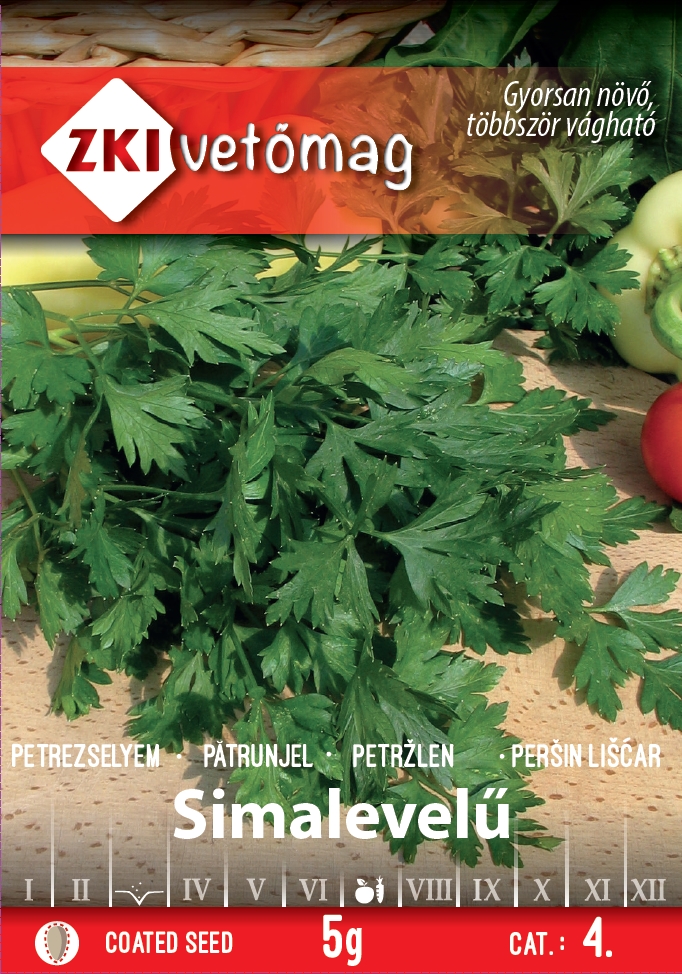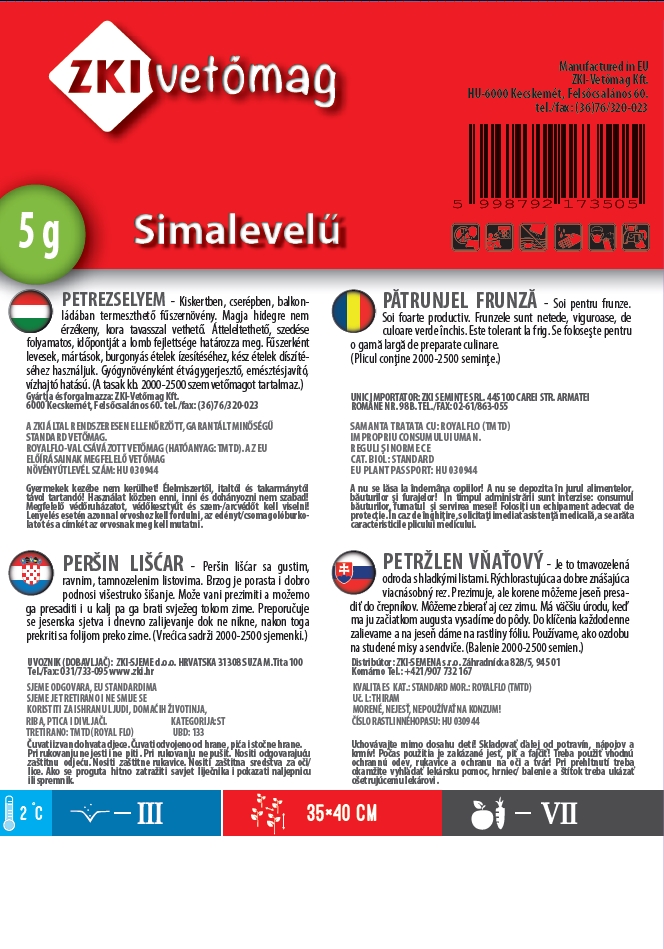Parsley Sima leaf 5g ZKI
| HUF 541 * (nettó: HUF 426) | |
Characterisation of chives:
The slightly swollen root collars give rise to the leaflets. Its root system, which is of no value to human nutrition, develops a luxuriant, luxuriant foliage. These leaves, and the lower leaves of the second annual plant, are compound on multiple stalks and the leaf blades are sessile. The leaf blade is serrated and frilled. The petiole is long and pale green. The leaf colour is dull dark green, but yellowish green varieties also occur. In the second year of the seed-stalk, the leaflets are dissected and the petioles gradually decrease in length towards the inflorescence. The 100-150 cm tall naked seed-stalk is angular and hollow inside, usually branched. In the second year, after seed maturation, the plant finishes its development and dies.
Environmental requirements of chives:
Heat requirements:
Similar to carrots, it is cold-tolerant, but even less heat-tolerant. It tolerates temperatures as low as minus 10 °C when fully grown. It can be sown in winter, but if sown in late summer it will strengthen until frosts, whereas if sown in late autumn the seed will overwinter and germinate in early spring at soil temperatures as low as 2-3 °C. It also tolerates heat well.
Light requirements:
Tolerant of partial shade, low light, shade tolerant. Its low light requirements make it an excellent winter grower. It is not at all susceptible to defoliation in the first year, which also increases the safety of its cultivation.
Soil requirements:
Strongly branched, deep-rooted, good water absorber. Its small seeds have a high oil content, which often delays germination, especially when rainfall is low. Therefore, sow in spring as soon as the soil can be covered, as the winter rainfall is still sufficient. It is advisable to irrigate later sowings. Care should be taken to avoid potting on the surface of the soil, as the seeds that have started to germinate will be suffocated. It will grow slowly for 3-4 weeks after germination, especially if the top layer of soil dries out and the small roots cannot take up enough water. It does not need subsequent watering and excessive rainfall is detrimental to its yield. It is indifferent to soil and soil chemistry. Unlike root vegetables, it grows well in all soils and is best suited to potting soil with good nutrient content. If water is too scarce or the soil water level is too high, leaf yield is reduced.
Nutrient requirements:
Medium nutrient demand, no special organic fertilization required. Unlike root parsley, it has low phosphorus requirements but much higher nitrogen needs.
Growing leaf parsley:
Seed sowing:
Can be sown at soil temperatures of 2°C in late February/early March. No sowing is necessary after emergence.
Spacing:
35 cm x 40 cm row spacing.
Harvest:
Leaves can be harvested from July.
| Weight: | 0.005 kg |
|---|---|
| Width: | 1 mm |
| Height: | 110 mm |
| Length: | 150 mm |
| Aviability: | 1-4 nap |
| Basic sales unit: | db |
| Culture: | Zöldség |
Login
Login

